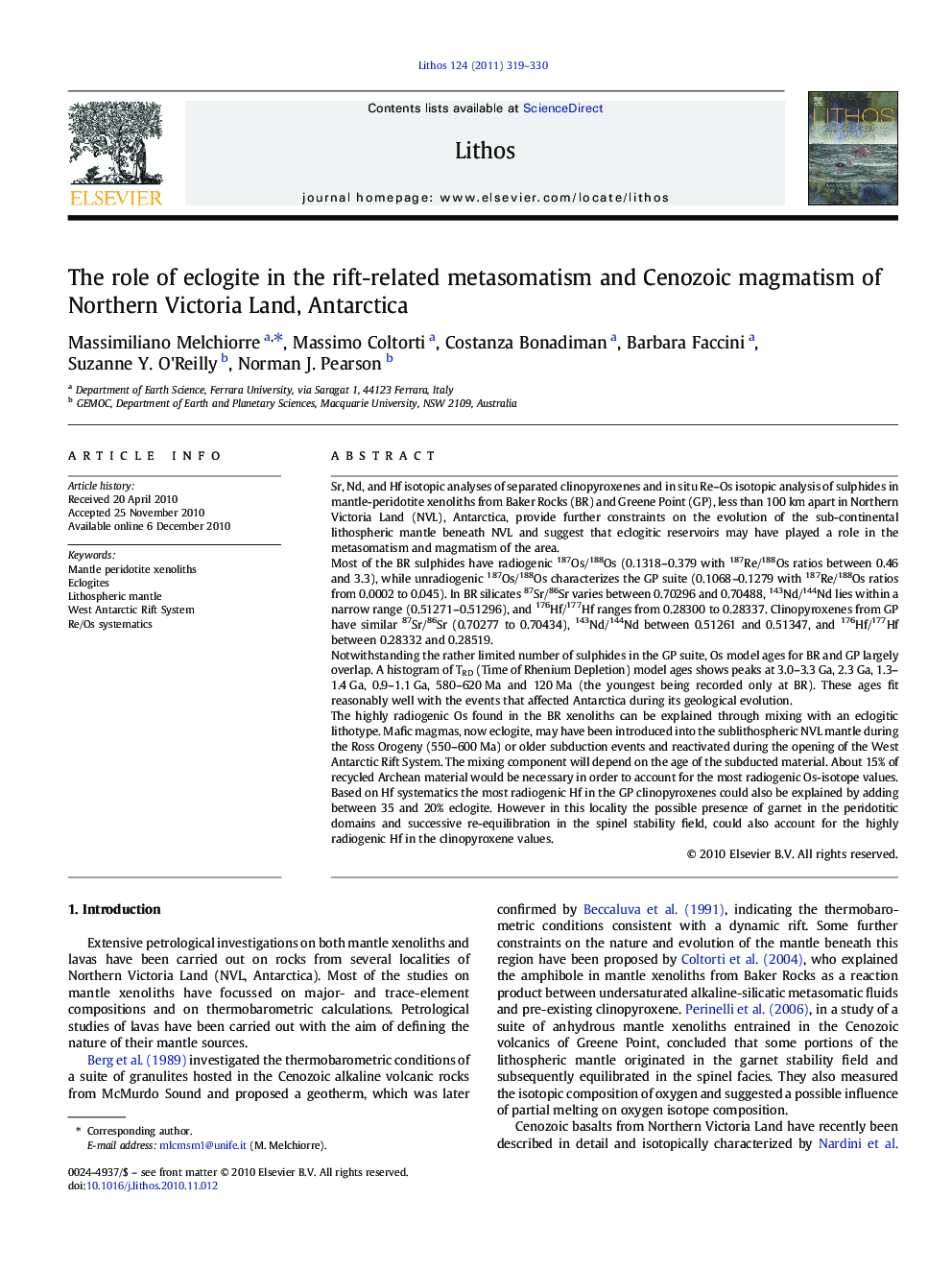| کد مقاله | کد نشریه | سال انتشار | مقاله انگلیسی | نسخه تمام متن |
|---|---|---|---|---|
| 4716770 | 1638720 | 2011 | 12 صفحه PDF | دانلود رایگان |

Sr, Nd, and Hf isotopic analyses of separated clinopyroxenes and in situ Re–Os isotopic analysis of sulphides in mantle-peridotite xenoliths from Baker Rocks (BR) and Greene Point (GP), less than 100 km apart in Northern Victoria Land (NVL), Antarctica, provide further constraints on the evolution of the sub-continental lithospheric mantle beneath NVL and suggest that eclogitic reservoirs may have played a role in the metasomatism and magmatism of the area.Most of the BR sulphides have radiogenic 187Os/188Os (0.1318–0.379 with 187Re/188Os ratios between 0.46 and 3.3), while unradiogenic 187Os/188Os characterizes the GP suite (0.1068–0.1279 with 187Re/188Os ratios from 0.0002 to 0.045). In BR silicates 87Sr/86Sr varies between 0.70296 and 0.70488, 143Nd/144Nd lies within a narrow range (0.51271–0.51296), and 176Hf/177Hf ranges from 0.28300 to 0.28337. Clinopyroxenes from GP have similar 87Sr/86Sr (0.70277 to 0.70434), 143Nd/144Nd between 0.51261 and 0.51347, and 176Hf/177Hf between 0.28332 and 0.28519.Notwithstanding the rather limited number of sulphides in the GP suite, Os model ages for BR and GP largely overlap. A histogram of TRD (Time of Rhenium Depletion) model ages shows peaks at 3.0–3.3 Ga, 2.3 Ga, 1.3–1.4 Ga, 0.9–1.1 Ga, 580–620 Ma and 120 Ma (the youngest being recorded only at BR). These ages fit reasonably well with the events that affected Antarctica during its geological evolution.The highly radiogenic Os found in the BR xenoliths can be explained through mixing with an eclogitic lithotype. Mafic magmas, now eclogite, may have been introduced into the sublithospheric NVL mantle during the Ross Orogeny (550–600 Ma) or older subduction events and reactivated during the opening of the West Antarctic Rift System. The mixing component will depend on the age of the subducted material. About 15% of recycled Archean material would be necessary in order to account for the most radiogenic Os-isotope values.Based on Hf systematics the most radiogenic Hf in the GP clinopyroxenes could also be explained by adding between 35 and 20% eclogite. However in this locality the possible presence of garnet in the peridotitic domains and successive re-equilibration in the spinel stability field, could also account for the highly radiogenic Hf in the clinopyroxene values.
Research highlights
► In situ Os isotopic ratio on sulphides from two Antarctic mantle xenolith suites.
► TRD model ages match the major geological events affecting Antarctica.
► A deep eclogitic component has to be mixed with the peridotitic mantle.
► The most feasible mixing percentage has been found for Archean cratonic eclogites.
Journal: Lithos - Volume 124, Issues 3–4, June 2011, Pages 319–330